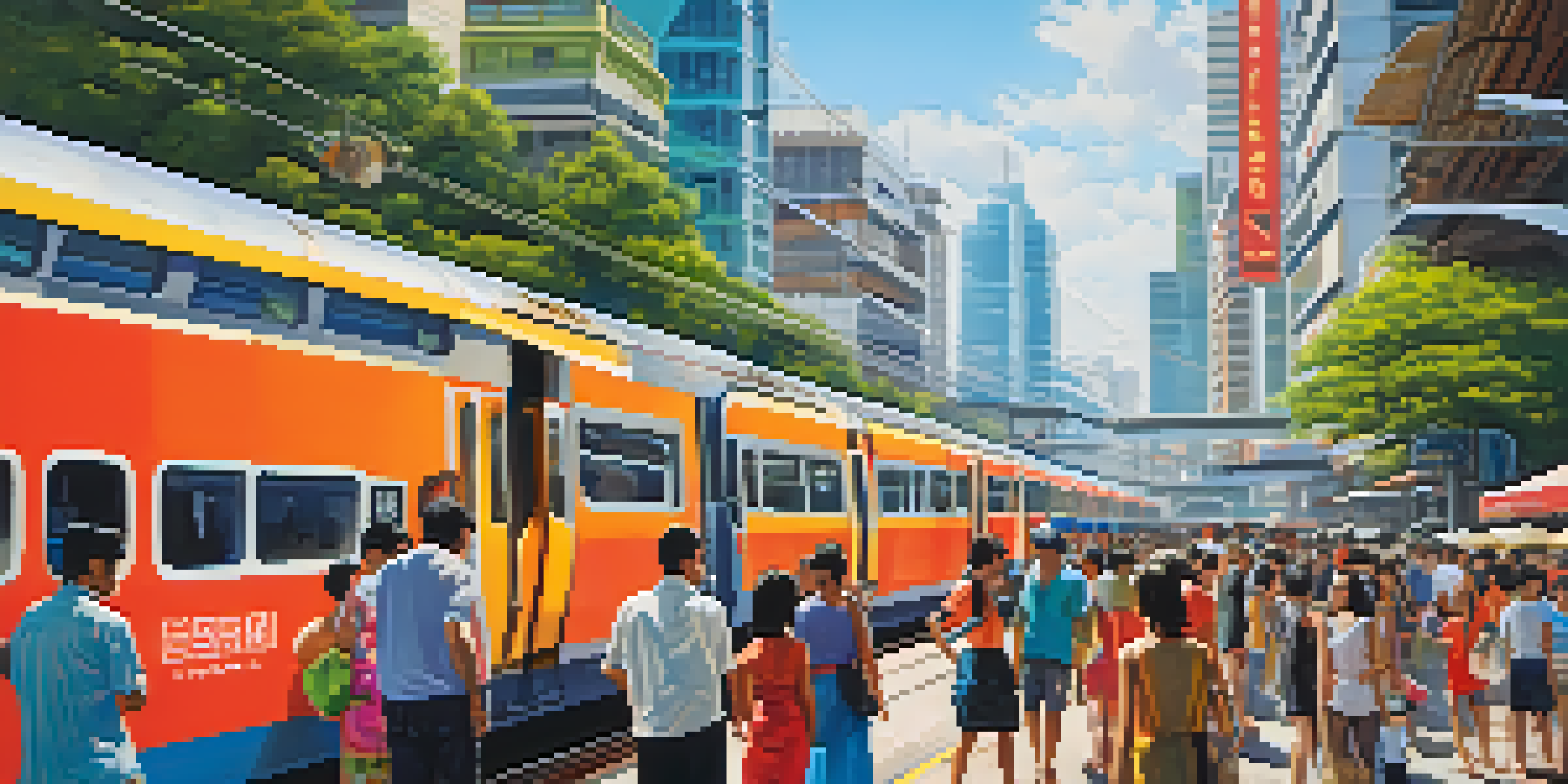Comparing Bangkok's Skytrain and Metro for Tourists

Overview of Bangkok's Public Transport Systems
Bangkok boasts a vibrant public transport system, primarily featuring the Skytrain and the Metro. These systems provide tourists with convenient access to various attractions throughout the city. While both options are efficient, they cater to slightly different needs and preferences. Understanding the key features of each can enhance your travel experience in this bustling metropolis.
Understanding the Skytrain: BTS
The Skytrain, known as the BTS, is an elevated train system that connects many key areas in Bangkok. With its sleek design and rapid service, it offers stunning views of the cityscape from above. The BTS is particularly popular among tourists due to its proximity to major attractions like shopping malls and cultural sites. It’s a great way to avoid the city's notorious traffic jams while enjoying the ride.
Bangkok's Transport Options Explained
Bangkok offers a vibrant public transport system, mainly featuring the Skytrain and Metro, each catering to different travel needs.
Exploring the Metro: MRT
The Metro, or MRT, operates underground and serves different neighborhoods compared to the BTS. This system is particularly useful for reaching areas that the Skytrain doesn’t cover, such as the bustling Chatuchak Market. The MRT stations are well-signposted and provide a comfortable travel experience, making it easy for tourists to navigate. Plus, the air-conditioned cars can be a welcome relief from Bangkok's heat.
Ticketing and Fares: How They Compare
Both the Skytrain and Metro have straightforward ticketing systems that cater to tourists. You can purchase single journey tickets or opt for a Rabbit Card for the BTS, which allows for cashless travel. The Metro offers similar options, including a stored value card for convenience. In general, fares are affordable, making both systems budget-friendly for travelers exploring the city.
Affordable and User-Friendly Fares
Both the Skytrain and Metro provide budget-friendly travel options with straightforward ticketing systems for tourists.
Traveling with Luggage: What to Know
Navigating Bangkok’s public transport with luggage can be a consideration for travelers. The Skytrain has designated areas for luggage, but it's essential to travel during off-peak hours to avoid crowds. The Metro is also accommodating, although some stations may have stairs that can be challenging with heavy bags. Planning your route in advance can help ensure a smoother journey.
Accessibility Features for Tourists
Both the Skytrain and Metro have made strides in becoming more accessible for all travelers. Elevators and escalators are available at many stations, allowing easier access for those with mobility challenges. Additionally, staff members are often on hand to assist if needed, ensuring a welcoming environment. Understanding these features can make your trip much more enjoyable.
Travel Tips for a Smooth Journey
To enhance your experience, avoid rush hours and plan your route in advance, especially when traveling with luggage.
Best Times to Travel: Avoiding Rush Hours
Timing your travel can significantly enhance your experience on Bangkok’s public transport. The rush hours, typically from 7-9 AM and 5-7 PM, can be particularly crowded, making it less enjoyable. For a more relaxed ride, aim to travel during mid-morning or early afternoon when the trains are less busy. This way, you can soak in the views and enjoy a more comfortable journey.
Final Thoughts: Choosing the Right Option
Ultimately, the choice between the Skytrain and Metro depends on your travel itinerary and preferences. If you're heading to popular tourist spots, the BTS might be your best bet. However, if you're looking to explore local neighborhoods or markets, the MRT could be the way to go. Whichever you choose, both systems are efficient and user-friendly, making them excellent options for getting around Bangkok.